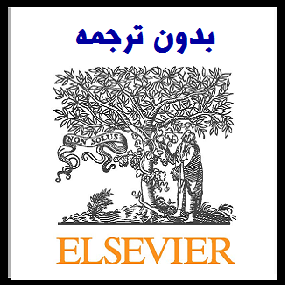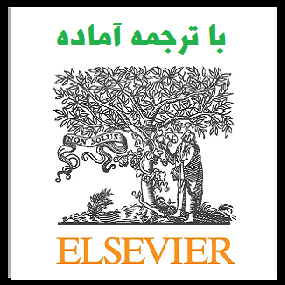مقاله انگلیسی هم ترازی مدیریت حسابداری-استراتژی در بانکداری اسلامی (2018 امرالد)


| عنوان فارسی مقاله | هم ترازی مدیریت حسابداری-استراتژی در بانکداری اسلامی |
| عنوان انگلیسی مقاله | Management accounting-strategy coalignment in Islamic banking |
| نمونه مقاله انگلیسی | Introduction
One of the most pressing challenges facing Islamic banks in Indonesia is how to increase market share, which remains low at just 4.64 per cent with total assets of US$22.4 billion (Financial Services Authority, 2015). In addition, because of structural factors, slow growth of market share is also attributable to operational issues such as limited office networks, lack of availability of competent human resources, less innovative products and high operational costs, as well as limited promotion and public education regarding Islamic banking (Ismal, 2013a, 2013b). These issues have led to low competitiveness in the national banking industry From a market-based perspective, there are two sources of competitive advantage that could be used by Islamic banks, namely, differentiation and low cost (Porter, 1998). Islamic banks can implement the differentiation strategy by offering unique operations according to Islamic principles, such as financing based on profit–loss sharing as a distinguishing factor from conventional banks (Ascarya and Yumanita, 2005). Islamic banks could also implement a low-cost strategy to ensure competitive prices that attract customers, the majority of whom are rational (Ismal, 2011). According to the contingency perspective, strategy success is determined by coalignment between the strategy and its contingency variables, both internal and environmental factors. Coalignment between strategic orientation and its contingency variables is known as strategic coalignment (Ventakraman, 1990). The level of strategic coalignment could explain why companies in the same industry and adopting the same strategies may perform differently. Based on low competitiveness and suboptimal strategy implementation at Islamic banks in Indonesia, this research will primarily solve these problems by analyzing strategic coalignment, which is expected to improve Islamic bank performance. This study uses the concept of business unit strategy developed by Porter (1998), who classified the strategy into low cost and differentiation. The internal contingency variables in this research include management accounting practices and management control systems, both of which have consistently proven to be contingency variables of the strategy when examining their impact on performance (Mia and Chenhall, 1994; Davila and Foster, 2005; Jermias and Gani, 2004; Auzair and Langfield-Smith, 2005; Cadez and Guilding, 2008; Tsamenyi et al., 2011; Gani and Jermias, 2012). The mission of Islamic banks, specifically to improve welfare in the world and the hereafter (falah), has implications on the indicators used to measure performance. Therefore, when assessing the performance of Islamic banks, this study uses the maqasid shariah concept that reflects comprehensive performance measurement in accordance with the purpose of human interaction under Islamic law. The impact of strategic coalignment on performance will be stronger when Islamic banks have adequate resources, such as modern infrastructure, competent human resources, sophisticated technology and innovative breakthroughs. The availability of resources, however, will depend on the corporate life cycle (Barney, 2001). Hasan et al. (2015) explained that the resources and capabilities of companies at the mature stage are greater and more diverse than companies at earlier stages. As a relatively new industry, Islamic banks have limited resources, networks, economies of scale and market share. Likewise, public awareness of Islamic banks remains low. Therefore, this study also analyzes whether the corporate life cycle of Islamic banks will affect the impact of strategic coalignment on performance. |
| نمونه ترجمه کامپیوتری | مقدمه
یکی از مهمترین چالش هایی که بانک های اسلامی در اندونزی با آن مواجه هستند، افزایش سهم بازار است که تنها با 4.64 درصد با دارایی های مجموع 22.4 میلیارد دلار (Authority Services Financial Services 2015) کم می شود. علاوه بر این، به دلیل عوامل ساختاری، رشد آهسته سهم بازار نیز به مسائل عملیاتی مانند شبکه های اداری محدود، فقدان منابع انسانی مناسب، محصولات نوآورانه و هزینه های عملیاتی بالا، و همچنین ارتقاء محدود و آموزش عمومی در رابطه با بانکداری اسلامی (Ismal، 2013a، 2013b). این مسائل باعث کم شدن رقابت در صنعت بانکداری ملی شده است. از دیدگاه بازار، دو منبع مزیت رقابتی وجود دارد که می تواند توسط بانک های اسلامی مورد استفاده قرار گیرد یعنی تمایز و کم هزینه (Porter، 1998). بانک های اسلامی می توانند استراتژی تمایز را با ارائه عملیات منحصر به فرد با توجه به اصول اسلامی مانند تامین مالی براساس تقسیم سود سود به عنوان یک عامل مشخص از بانک های متعارف (Ascarya و Yumanita، 2005) پیاده سازی کنند. بانک های اسلامی همچنین می توانند یک استراتژی کم هزینه برای اطمینان از قیمت های رقابتی که مشتریان را جذب می کنند، اکثر آنها منطقی باشند (Ismal، 2011). براساس دیدگاه احتمالی، موفقیت استراتژی توسط نیروی انسانی بین استراتژی و متغیرهای احتمالی آن، عوامل داخلی و محیطی تعیین می شود. همبستگی بین جهت گیری استراتژیک و متغیرهای احتمالی آن به عنوان استقرار استراتژیک استراتژیک (Ventakraman، 1990) شناخته می شود. سطح استقرار استراتژیک می تواند توضیح دهد که چرا شرکت های در همان صنعت و اتخاذ استراتژی های مشابه می توانند متفاوت عمل کنند. بر اساس اجرای کم نظیر رقابت و عدم اجرای راهبرد استراتژیک در بانک های اسلامی اندونزی، این تحقیق عمدتا با حل تحولات استراتژیک استراتژیک استراتژیک است که انتظار می رود عملکرد بانک های اسلامی را بهبود بخشد. این مطالعه با استفاده از مفهوم استراتژی واحد کسب و کار توسط Porter (1998)، استراتژی را به هزینه کم و تمایز طبقه بندی می کند. متغیرهای احتمالی داخلی در این تحقیق شامل روش های حسابداری مدیریتی و سیستم های کنترل مدیریت است که هر دو به طور مداوم ثابت می شوند که متغیرهای احتمالی استراتژی در هنگام بررسی تأثیر آنها بر عملکرد (Mia and Chenhall، 1994؛ Davila and Foster، 2005؛ Jermias and گانی، 2004؛ اوازایر و لانگفیلد اسمیت، 2005؛ کادیز و گیلینگ، 2008؛ تسامنی و همکاران، 2011؛ گانی و جرمیس، 2012). مأموریت بانک های اسلامی، به ویژه برای بهبود رفاه در جهان و بعد از آن (فالح)، بر شاخص های استفاده شده برای اندازه گیری عملکرد تاثیر می گذارد. بنابراین، در ارزیابی عملکرد بانک های اسلامی، این مطالعه از مفهوم شرعی مقدس استفاده می کند که نشان دهنده اندازه گیری عملکرد جامع مطابق با هدف تعامل انسان با قانون اسلامی است. توجه؛ (این ترجمه توسط نرم افزار انجام شده و ویرایش نشده است و احتمال وجود اشتباه در آن وجود دارد. در صورت ثبت سفارش، ترجمه توسط مترجمین مجرب انجام خواهد شد. برای مشاهده نمونه ترجمه های تخصصی و اخیر مترجمین جهت اطمینان از کیفیت ترجمه، اینجا کلیک نمایید.) |
| سال انتشار | 2018 |
| ناشر | امرالد |
| مجله | مجله بین المللی امور مالی و مدیریت اسلامی و خاورمیانه – International Journal of Islamic and Middle Eastern Finance and Management |
| کلمات کلیدی | استراتژی، بانکداری اسلامی، حسابداری مدیریت، Coalignment، سیستم کنترل مدیریت، شریعت |
| کلمات کلیدی انگلیسی |
strategy, Islamic banking, Management accounting, Coalignment, Management control system, Maqasid Shariah |
| صفحات مقاله انگلیسی | 30 |
| مناسب برای رشته | مدیریت، اقتصاد، حسابداری |
| مناسب برای گرایش | بانکداری، بانکداری اسلامی، حسابداری مدیریت |
| توضحیات | این مقاله انگلیسی جدید بوده و تا کنون ترجمه نشده است. جهت ثبت سفارش ترجمه از لینکهای زیر استفاده نمایید. |
| دانلود مقاله انگلیسی | ○ دانلود رایگان مقاله انگلیسی با فرمت pdf (کلیک کنید) |
| سفارش ترجمه فارسی | ○ سفارش انجام ترجمه و تایپ این مقاله (کلیک کنید) |
| سایر مقالات این رشته | ○ مشاهده سایر مقالات رشته مدیریت (کلیک کنید) |




